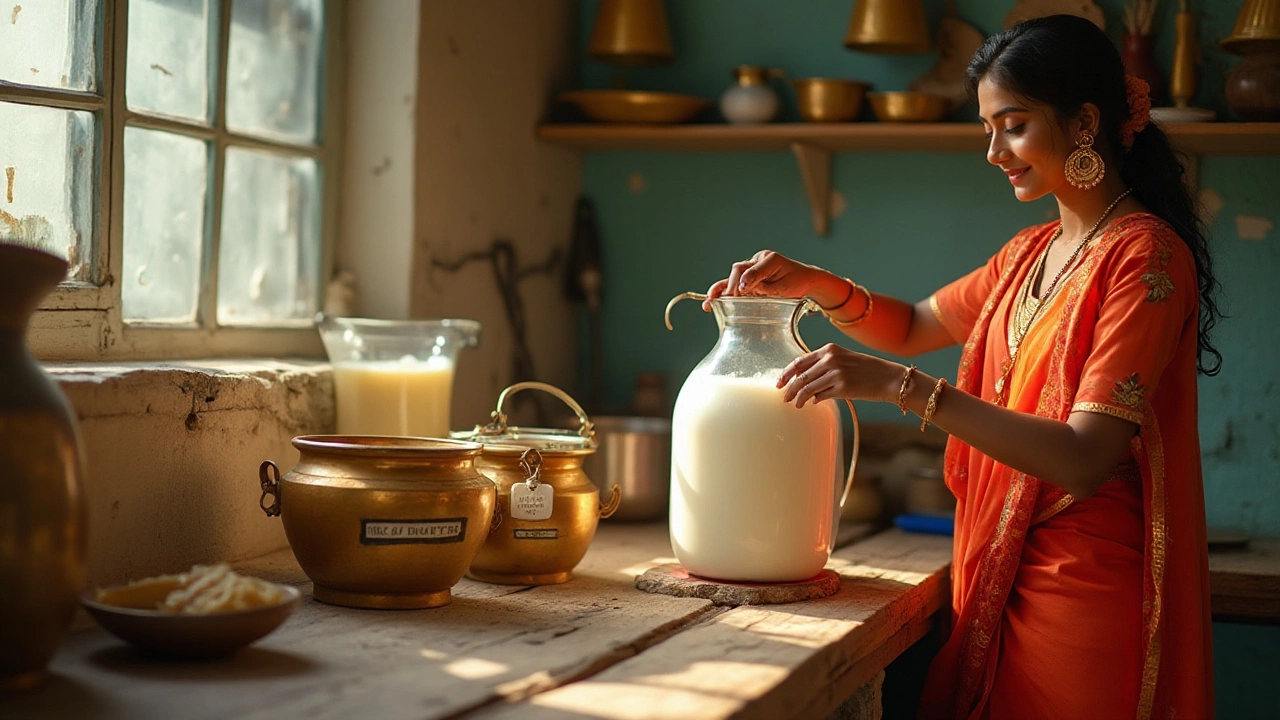Milk for Paneer: Simple Steps for Perfect Homemade Cheese
If you want paneer that tastes fresh and melts in your mouth, start with the right milk. Not all milk works the same – whole, low‑fat, or skim will give you different textures. Whole fresh milk (full‑cream) is the safest bet because its fat protects the curds and makes them soft.
Measure about 1 liter of milk for a small block of paneer (around 150‑200 g). Using more milk will give you a larger block, but the ratio stays the same – roughly 1 liter per 150 g of cheese.
Heating the Milk
Put the milk in a heavy‑bottomed pot. Heat slowly over medium flame. Stir occasionally to stop the skin from forming at the bottom. When the milk reaches a gentle boil (about 90‑95 °C or when you see tiny bubbles around the rim), turn off the heat.
Don’t let it scorch – burnt milk gives a bitter taste to your paneer. A thermometer helps, but watching the bubbles works fine for most home cooks.
Curdling the Milk
Now comes the acid. You can use fresh lemon juice, white vinegar, or even citric acid. Start with 2 tablespoons of lemon juice or vinegar diluted in a little water. Pour it slowly into the hot milk while stirring gently.
The milk will split into curds (white lumps) and whey (greenish‑yellow liquid). If it looks like it’s not separating, add a little more acid, a teaspoon at a time, until the whey is mostly clear.
Let the mixture sit for 2‑3 minutes. This rest lets the curds firm up a bit, making them easier to handle.
Draining and Pressing
Line a colander with a clean cheesecloth or muslin. Pour the curd‑whey mixture into it. Gather the cloth’s corners and squeeze out as much whey as you can – the more you press, the firmer the paneer.
For a soft paneer, press lightly for 5‑10 minutes. For a firm block that holds its shape in curries, place a heavy pan on top and let it sit for 30‑45 minutes.
After pressing, rinse the paneer under cold water. This removes any lingering acid flavor and stops further cooking.
Storing Your Paneer
Wrap the fresh block in plastic wrap or store it in an airtight container with a little cold water. Keep it in the fridge for up to 3 days. If you need longer storage, freeze the paneer – it will stay good for a month. Thaw it in the fridge before using.Enjoy your paneer in dishes like palak paneer, paneer tikka, or simply toss it into salads. With the right milk and a few careful steps, you’ll get that creamy, melt‑in‑your‑mouth texture every time.
Choosing the Best Milk for Homemade Paneer: A Comprehensive Guide
Making paneer at home can be a rewarding experience, but choosing the right milk is crucial for the perfect texture and flavor. While milk options like cow, buffalo, and plant-based alternatives offer different results, each has its own distinct qualities that impact the paneer making process. Purity, fat content, and freshness are key factors to consider when selecting milk for your paneer. This article explores the various types of milk available, offering tips and insights to help you create the best homemade paneer.
